What’s the first thing that comes to mind when you think of Paris attractions? We bet the Eiffel Tower pops into your head immediately. Then, depending on how much you know about the city, you might think of Notre Dame, the Louvre, Versailles, or even the Moulin Rouge. But France’s capital boasts so many monuments, parks, and places of interest that no matter how many times you visit, you’ll always find something new to do and see in Paris.

When we refer to “something new,” we don’t exclusively mean modern attractions. The city has historic gems like the Opera Garnier in Paris, which isn’t usually a priority for first-time tourists. This 19th-century building mostly attracts visitors who have been to Paris before or are coming for a specific show. The beauty and grandeur of this building also make it increasingly popular among people looking for great photos for their social media.
In this article, we’ll tell you what to see inside the Opera Garnier in Paris. We’ll also provide information on hours, tours, costs, and fun facts to help you make the most of your visit to this stunning attraction.
What You Need to Know About the Opera Garnier in Paris
History of the Opera Garnier in Paris
The Opera Garnier was commissioned by Emperor Napoleon III during the transformations of Paris in the Second Empire. The entire project was overseen by Baron Georges-Eugène Haussmann, which is why it’s also known as “Haussmannian works.” These renovations aimed to modernize the “City of Light” and faced significant criticism for their high cost and the demolitions required to complete them.
In fact, in 1858, Napoleon III had to authorize the use of 12,000 square meters (about 3 acres) allocated for the construction of a second theater for opera and ballet in Paris. This decision by the emperor also meant demolishing everything within the designated space to make room for the new building.
The design of the theater, as was customary at the time, was chosen through a competition won by the architect Charles Garnier. Construction officially began in 1862 but was interrupted several times. Among the events that most affected the project’s continuation were the Franco-Prussian War and the fall of the Second French Empire in 1870.
In 1873, the original opera house, the Royal Academy of Music, was destroyed in a fire. By then, both the opera and ballet in Paris had gained such prestige that it accelerated the construction of the new venue to meet audience demand. The Palais Garnier opened its doors on January 5, 1875.
Today, you can take guided tours or buy tickets for the Opera Garnier in Paris and explore the building on your own. The Palais Garnier is located in the 9th arrondissement, one of the best areas to stay in Paris, known as the opera district.

Architecture of the Palais Garnier in Paris
Although you can still watch opera and ballet performances at the Palais Garnier, the architecture of the building is an attraction in itself.
The building, which mixes classical, baroque, and modern elements, has been described as Second Empire or Napoleon III style. In fact, it’s said to be one of the first buildings of this style, and Garnier invented the name to respond to the emperor’s wife when she asked if the opera would be Roman or Greek in style. However, many historians refer to the palace’s architecture as neo-baroque.
This is an ostentatious building filled with details that aimed to represent the wealth of France at that time.
The facade of the Palais Garnier is a mix of arches and sculptures representing the arts. The most striking of these sculptures is one of Apollo raising a golden lyre, which crowns the building at 66 meters (217 feet) high. Apollo is surrounded by two gold sculptures representing poetry and music. The exterior of the palace also features busts of famous composers like Beethoven and Mozart.
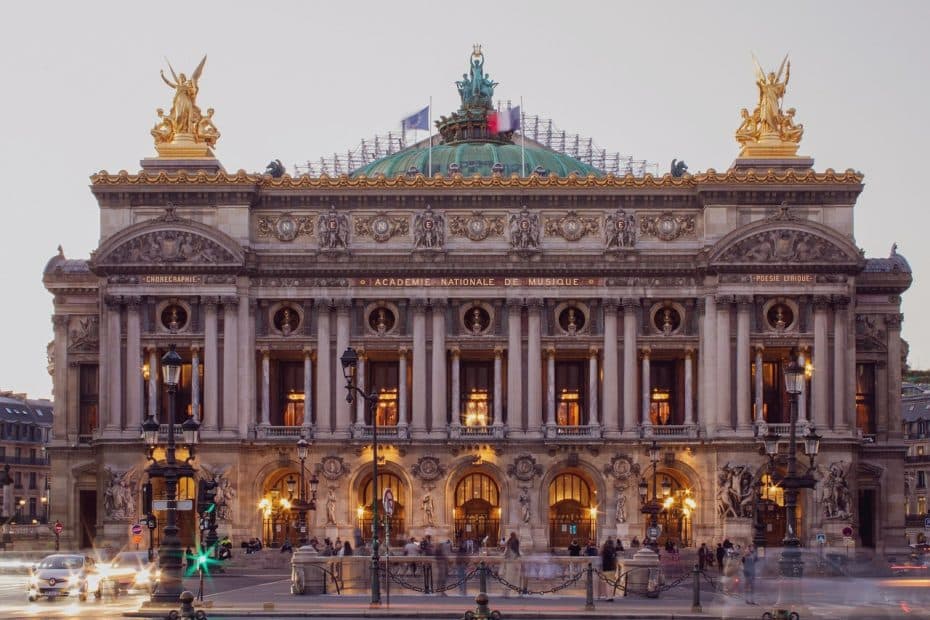

Inside the Palais Garnier, you’ll find the same golden and reddish tones as its facade. One of its most striking features is its grand staircase made from marble in various shades. Additionally, the Grand Foyer is notable for its mirrors and the spectacular paintings by Paul Baudry that adorn its ceiling.
The main auditorium itself is a mix of red velvet seats with golden ornaments, giving it a very luxurious appearance. It’s said that Garnier chose red velvet because it would create a flattering contrast with the skin tones of the audience.
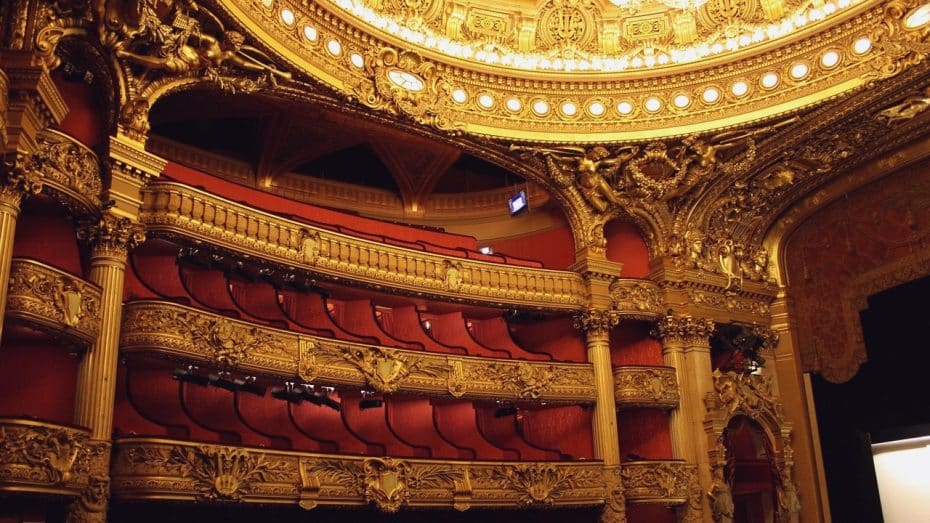
However, the most striking feature of the auditorium is its chandelier that weighs six tons (about 13,228 lbs) and served as the inspiration for “The Phantom of the Opera.” This gothic novel tells the story of a phantom, who is actually a mysterious man living in the palace, causing “accidents” left and right. One of the most notorious incidents in the book is when the phantom drops the chandelier during an opera performance.
The ceiling painted by Marc Chagall, which depicts great masters of opera and ballet, is another highlight of the Opera Garnier auditorium in Paris.
The auditorium seats over 2,000 spectators, while the stage can accommodate more than 400 artists at the same time.
Practical Information About the Opera Garnier in Paris
The Palais Garnier is open every day from 10 AM to 5 PM. General admission costs €14 per person, while guided tours cost €20.50 and last one hour and thirty minutes.
There are also themed tours dedicated to the Belle Époque and mystery, immersive experiences, and children’s tours, although these are only available in English and French. So, if Spanish is the only language you’re comfortable with, it might be better to purchase a general admission ticket and explore the Opera Garnier in Paris on your own.
This building is located at Place de L’Opéra, in the 9th arrondissement of Paris. The nearest metro stations to the Palais Garnier are Opéra (Lines 3, 7, and 8) and Chaussée d’Antin – La Fayette (Lines 7 and 8).
You can also attend a performance at the Opera Garnier in Paris to see a musical, theatrical, or dance show.


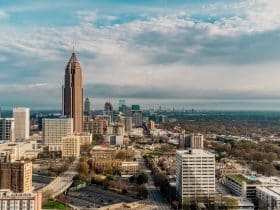




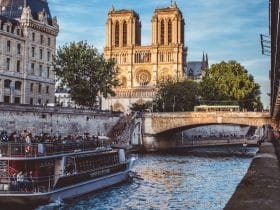
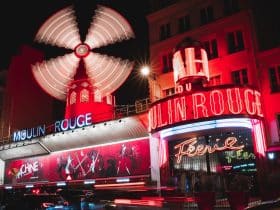
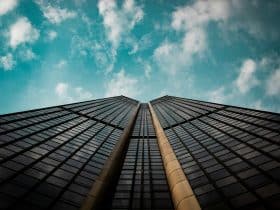







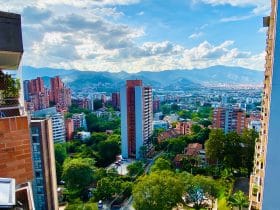
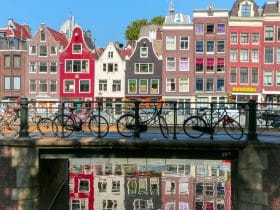


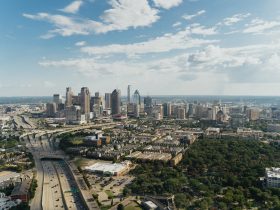

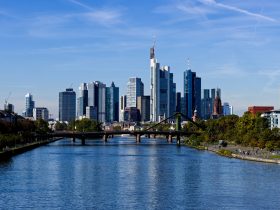




Leave a Reply
View Comments